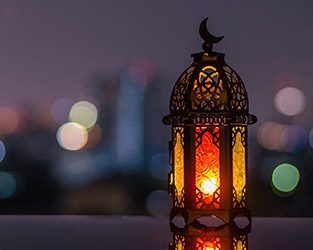It took several years for me to realise that there was something ‘different’ about me. Some of the other children at primary school were the first to point out that my skin was brown compared to theirs. I genuinely had not noticed until then. I had always just assumed that I was the same as everybody else. Thinking back now, my primary school (in the historic county of Middlesex which got absorbed into Greater London) was probably around 99% white at the time.
Then it all started to dawn on me gradually. My classmates’ grandmothers didn’t come to pick them up from school wearing colourful saris, didn’t get excited during Alphonso mango season, and didn’t take them on lengthy detours on the way back from Brent Cross shopping centre to procure samosas and Indian sweets.
Once I did become aware of my mixed-race status, there was a period of time during which I was, perhaps, slightly embarrassed about it. I think this boiled down to the fact that I didn’t want to stand out as being different. I just wanted to blend in with the other kids.
I feel English. I always have. I was born in England. My surname is English. I consider my late father and his parents to have been very ‘middle England’. I didn’t set foot on Indian soil until I was in my 20s. My mother was born in India but came to England as a young child. She doesn’t speak any Indian languages. She speaks English with an English accent and she wears Western clothes. She was the only Indian pupil at her school when she started there (in the late 1950s), and her sister was the second. Consequently, she is a very anglicised Indian.
Even though the UK has become more and more diverse over the last few decades, looking a bit brown still means being asked where you’re from. People are never content with your first answer, and I do get exasperated by people thinking I am less English than them. They will follow up with a “Where are you from originally?” [Translation: brown people do not come from London, you cannot be telling the truth.] A (blue-eyed) school friend of mine, whose mother is Austrian, has never experienced this even though she is no more English than I am. The amount I’m complimented on my ‘tan’ still surprises (annoys) me too. [Me (silently): “Er, this is not actually a tan; it’s just my natural skin colour. Perhaps it has escaped your notice that skin comes in many different shades. Not just a) white and b) suntanned. Did you never see a Benetton advert?!”]. Oh well, I guess it just comes with the territory. There are pros and cons. My half-Austrian friend has never had her Englishness called into question, but I have never needed to go for a spray tan.
People have never been good at guessing what my mix is, and I enjoy being ethnically ambiguous. Everyone loves a guessing game, don’t they? I have been asked if I am: French, Spanish, Italian, Portuguese, Cuban, South American, Aborigine, Maori, or native American. Hours of fun. It has rarely happened (if ever) that anyone has correctly detected that I am half English and half Indian. This always used to make me feel exotic and mysterious, which I liked. As I got older, I learned that having an Indian half was something to be proud of and nothing to be embarrassed about. I like having an Indian half. It has enriched my life and it made me unique among my friends, in both the way I look and the perspective it gave me. I like the mix of cultures I have grown up with and I think it has made me an open-minded person.




